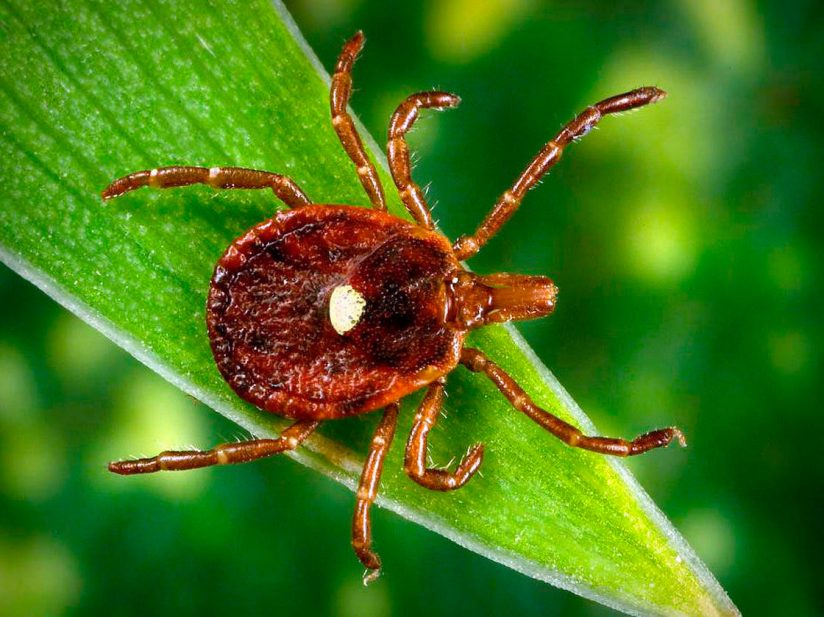Ticks
Ticks are small arachnids. Ticks require blood meals to complete their complex life cycles. Ticks are scientifically classified as Arachnida (which includes spiders). The fossil record suggests ticks have been around at least 90 million years. There are over 800 species of ticks throughout the world, but only two families of ticks, Ixodidae (hard ticks) and Argasidae (soft ticks), are known to transmit diseases or illness to humans. Hard ticks have a scutum, or hard plate, on their back while soft ticks do not.
Lone Star Tick

Photo credit: CDC Public Image Library
Amblyomma americium. The lone star tick is found primarily in the southern and south central US. It is a reddish-brown species and the common hosts include a wide variety of mammals, including humans, and ground feeding birds. The adult females have a distinct white spot on their back and males have white markings around the outside of their back. This tick species can transmit ehrlichiosis, Lyme Disease, Rocky Mountain spotted fever, and tularemia.
American Dog Tick
Dermacentor variables. The American dog tick is widely distributed east of the Rocky Mountains and also occurs on the Pacific Coast. The dog is the preferred host of the adult D. variabilis, although it readily feeds on many large mammals including man. The males and females have pale whitish or yellowish markings on the scutum or dorsal shield. Males may be only 1/8 inch long, while engorged females may be as much as 1/2 inch in length. This tick species is known to transmit Rocky Mountain spotted fever and tularemia.
Black-legged Tick (Deer Tick)
Ixodes scapulars. The black-legged tick occurs in the eastern half of the US. Common hosts include deer, livestock and dogs. This species readily feeds on humans in the northeastern US and only occasionally in Texas. The males and females or dark brown in color and have no white markings. Males may be only 1/8 inch long, while engorged females may be as much as 1/2 inch in length. This tick species is known to transmit Lyme disease and babesiosis.
Brown Dog Tick
Rhipicephalus sanquineus. The brown dog tick is found throughout the US. It is a reddish-brown species that attaches dogs, and other mammals, but rarely bites man. This species is one of the most common in homes, where it feeds on dogs and then drops off the infested animal. This tick species can transmit canine ehrlichiosis.
